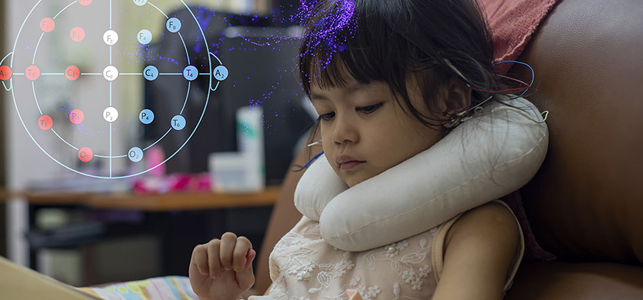
CHoR EEG lab earns national ABRET accreditation
 From helping kids understand and cooperate with the process to ensuring precise recording and analysis of results, conducting an EEG is a delicate process. It’s important to have skilled EEG technicians and neurologists, like ours. Our EEG lab is among a select group of labs in the country to be accredited by ABRET, the national source for neurodiagnostic credentialing and accreditation, for meeting high technical standards and demonstrating quality output while providing care for kids of all ages.
From helping kids understand and cooperate with the process to ensuring precise recording and analysis of results, conducting an EEG is a delicate process. It’s important to have skilled EEG technicians and neurologists, like ours. Our EEG lab is among a select group of labs in the country to be accredited by ABRET, the national source for neurodiagnostic credentialing and accreditation, for meeting high technical standards and demonstrating quality output while providing care for kids of all ages.
What is EEG?
EEGs, or electroencephalograms, create a figurative window into the brain – providing helpful information in the diagnosis, and eventual treatment, of a number of neurological conditions.
How does an EEG work?
By placing small electrodes – metal discs with thin wires – on the scalp using a special paste, doctors can study and record the electrical patterns of neurons in various parts of the brain. These recordings, made by a computer, look like wavy lines.
“Normal brain waves have a predictable and recognizable pattern, so when we see a pattern that’s not ‘typical’ we conduct further analysis to determine why,” said Dr. Nassim Zecavati, director of epilepsy. “Certain conditions have their own signature brain wave patterns so we’ll look for those, as well as the exact locations within the brain that the irregularities are occurring, to pinpoint the issue and make an accurate diagnosis.”
EEGs produce many pages of brain activity, including basic waves as well as those produced in response to specific stimuli such as flickering lights or loud noises. They’re often used to diagnose epilepsy and other seizure disorders, strokes, brain tumors, chronic headaches or concussions.
Special care, just for kids
In children normal patterns are very distinct at different times in development, so what is normal in a toddler is very different from someone in middle school. Even the same condition can look different at different ages. This is why being able to provide the highest quality EEG studies to our doctors is so important in ensuring the best care.
EEGs aren’t painful, but the process can still be a bit scary for kids. That’s where our technicians really shine.
“Our EEG technicians are among the best at not only setting up the EEG and placing the electrodes, but at employing a kid-friendly approach to care that puts both the patients and parents at ease,” added Dr. Lawrence Morton, division chair of Child Neurology and division chief of Clinical Neurophysiology. “It’s this compassion and attention to detail that lead to accurate results and allow our physician team to make a diagnosis and through treatment plan for each child.”
This treatment may include medication, behavior modifications and/or surgery.
Our EEG lab is part of our comprehensive neurosciences center. Learn more about how our neurosciences team helps kids with all conditions involving the brain, spine and nervous system – from common to complex.
